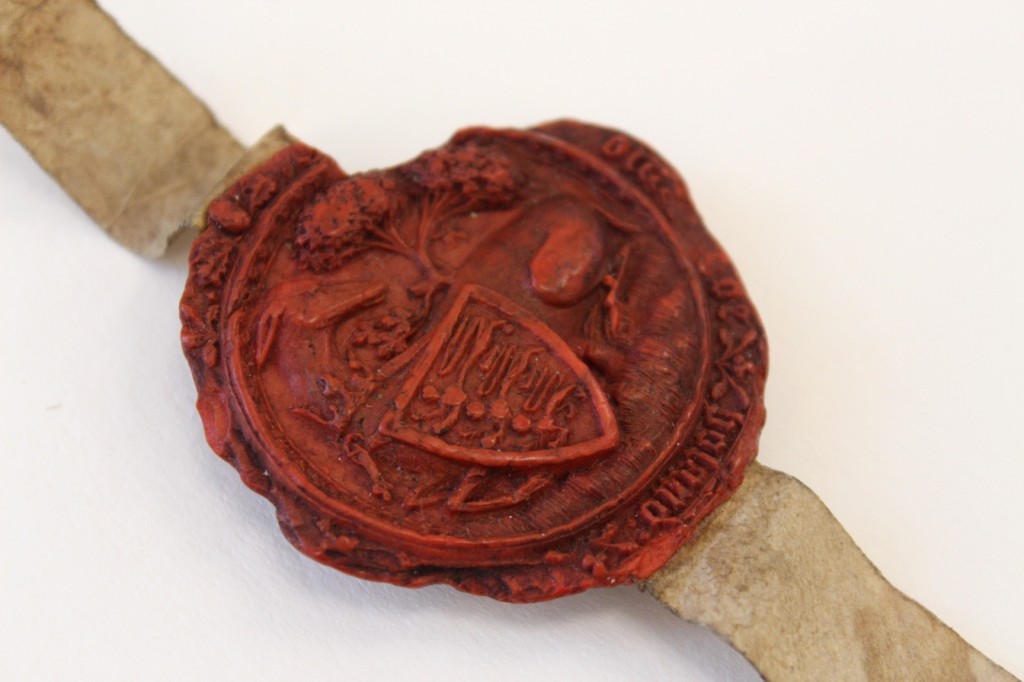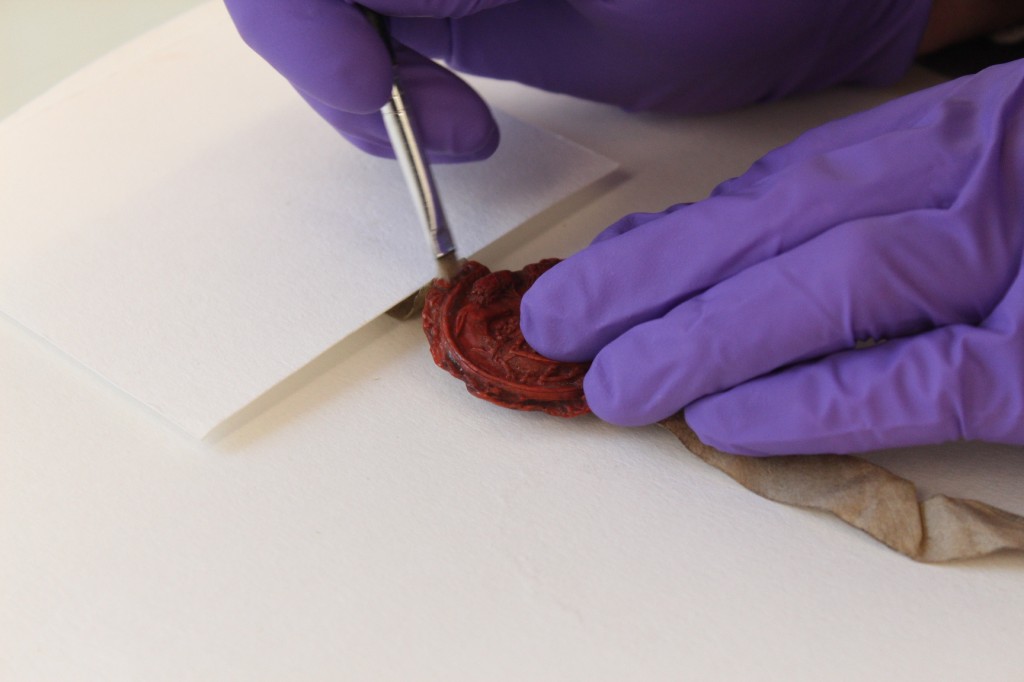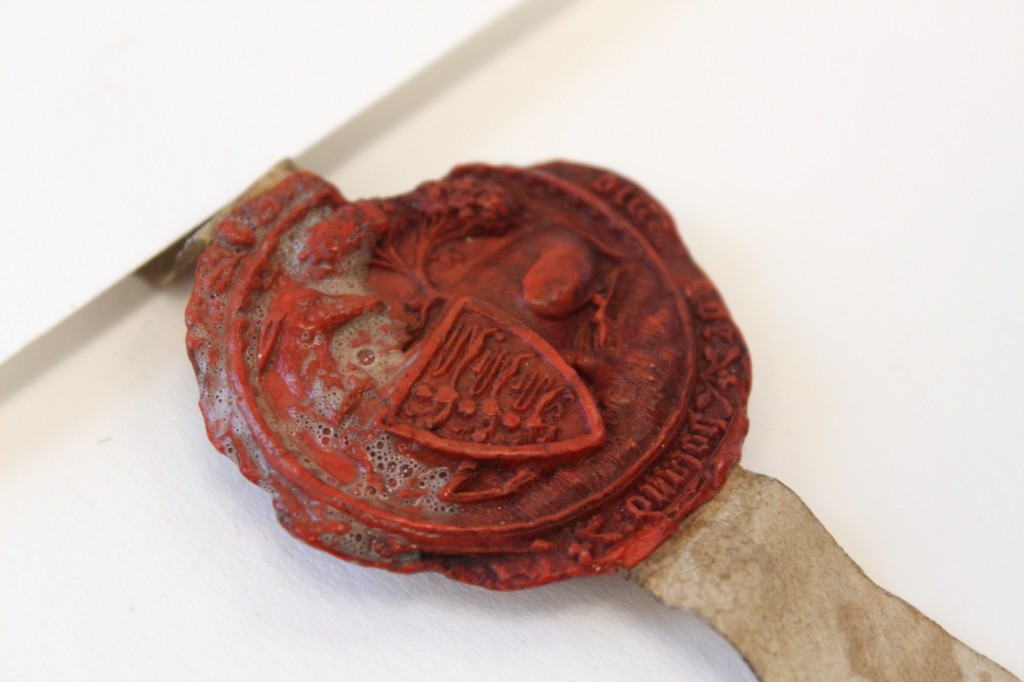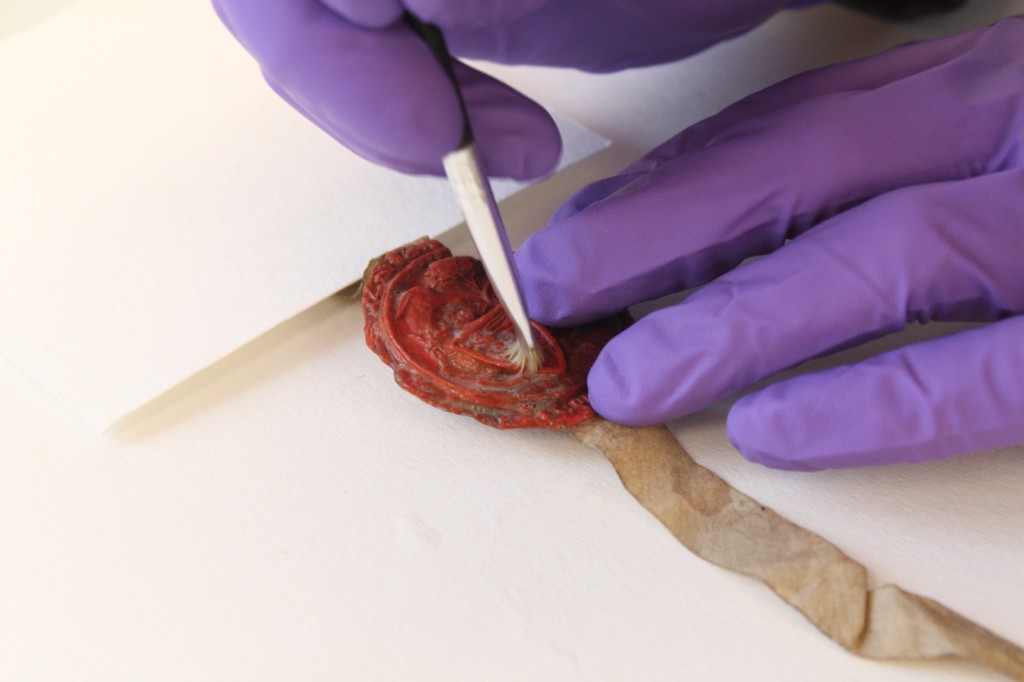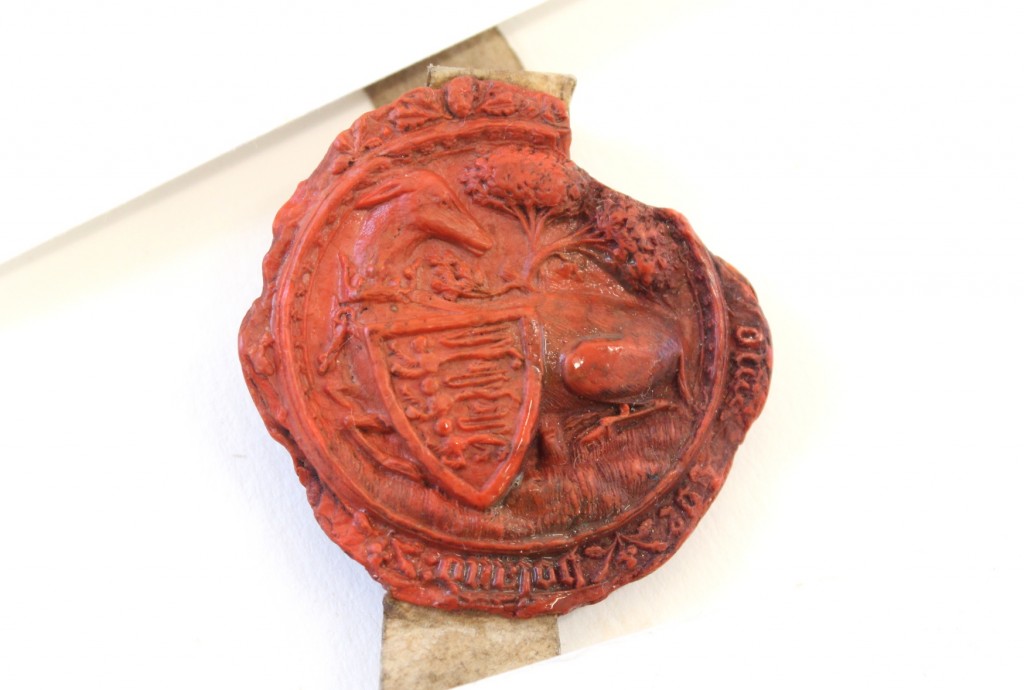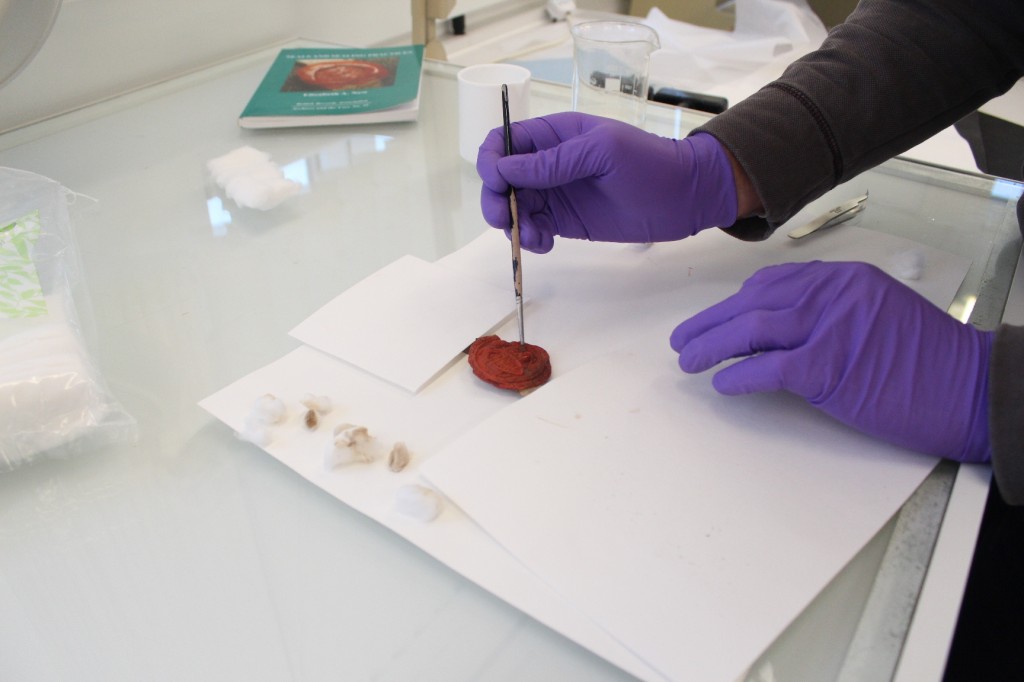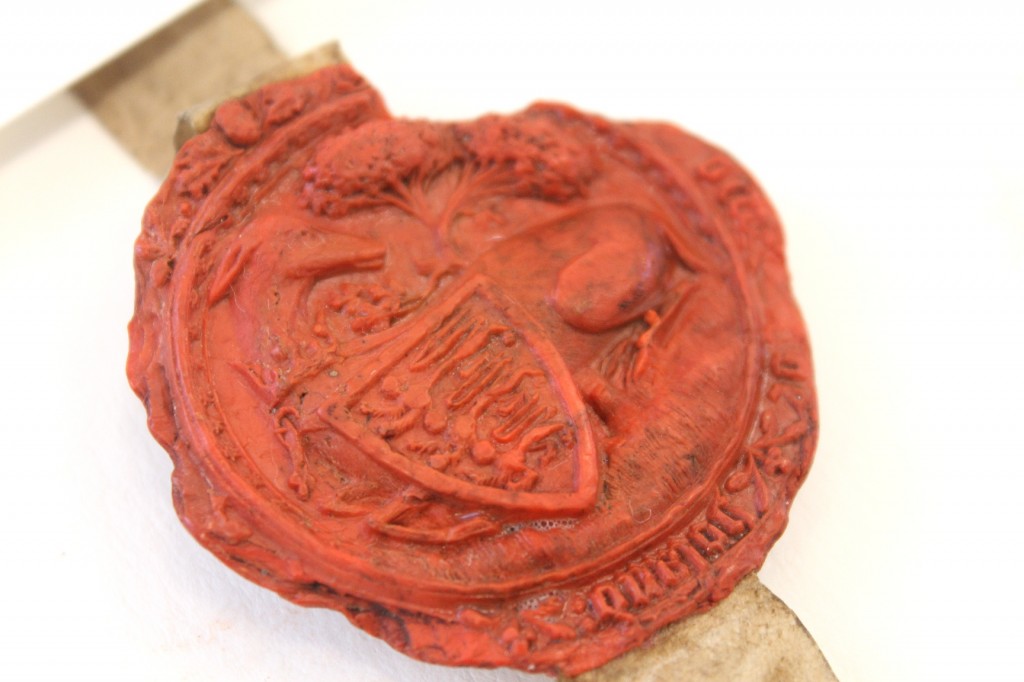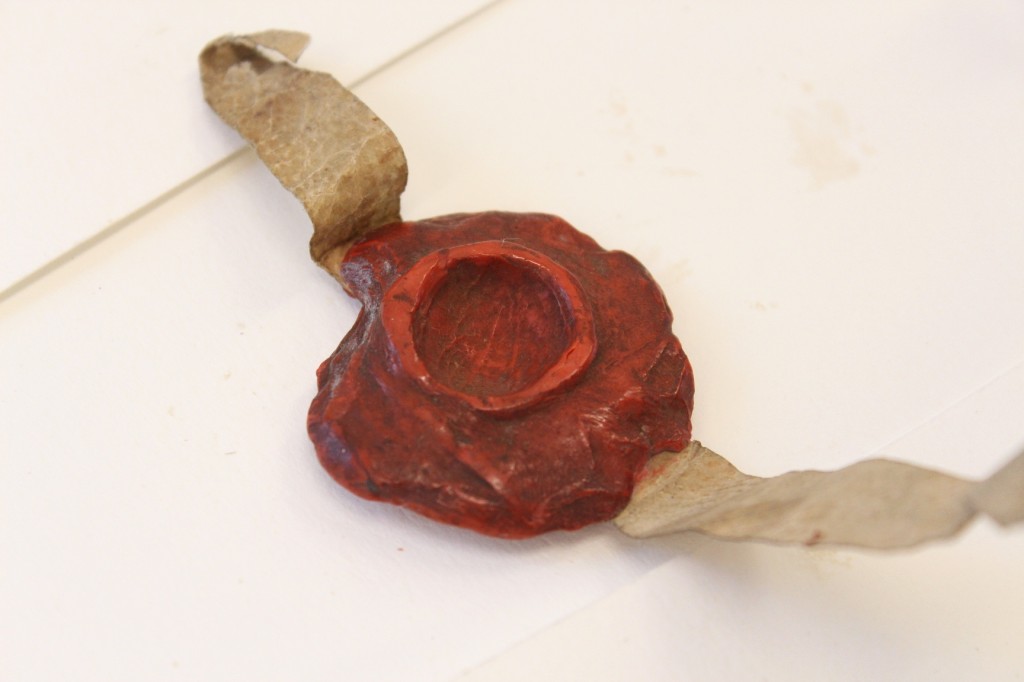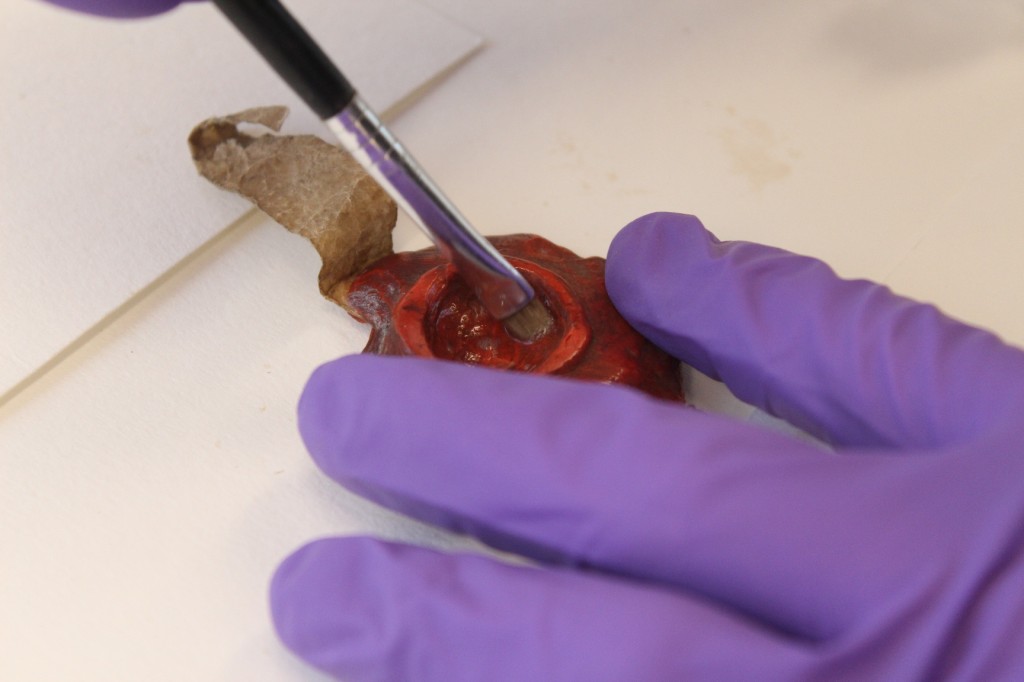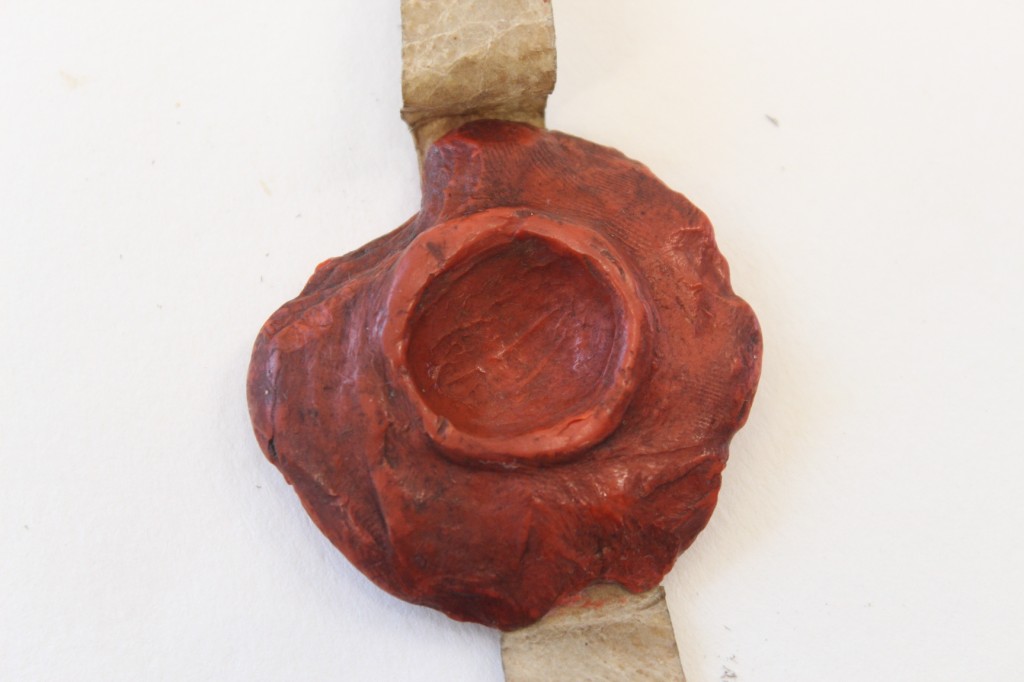To accompany The Fighting Essex Soldier: Recruitment, War and Remembrance in the Fourteenth Century conference on 8 March 2014, Dr Jennifer Ward is preparing a display of documents for our Searchroom. We are in the process of preparing the documents for display, which has included cleaning a beautiful wax seal from 1384 which has survived remarkably intact.
This seal belongs to an indenture between Thomas Holland and Richard II concerning the governorship of Cherbourg, made in 1384 (D/DRg 1/62). Thomas Holland (1350-1397) was earl of Kent and Richard’s older half-brother, and the seal is his badge.
Thomas was the son of another Thomas Holland and Joan, ‘The Fair Maid of Kent’. After her first husband’s death in 1360, Joan married Edward, Prince of Wales, known as the Black Prince, son of King Edward III.
Richard was the second son of this marriage, born in 1367, although when the elder boy, Edward, died Richard was thrown into the direct line of succession to the English throne. His father died in 1376, and his grandfather Edward III died in 1377, making Richard king at the age of just 10 years old. Richard was ultimately deposed in 1399 by his cousin Henry Bolingbroke, who became Henry IV. Richard was imprisoned and it is believed he starved to death in captivity.
His elder half-brother Thomas Holland was one of Richard’s councillors, and acquired great influence over the young king. Thomas had spent his early career from 1366 in military service abroad, in Spain and France, under the Black Prince. He received gifts of money and valuable jobs from Richard once he was king. In his later career, his military experience was used to help suppress the Peasants’ Revolt in 1381, and then as governor of English-held Cherbourg from 1384.
This indenture (more on which in this post) assigned Thomas £4,000 a year as governor of the castle and town of Cherbourg in consideration of his providing sufficient garrison and artillery.
Our Seax description for the seal takes a little unpicking: ‘Seal of the earl: a hind couchant regardant, wearing as a collar a crown from which is suspended by a chain a shield of the arms of England.’
The hind, or deer, is described as ‘couchant’, which means an animal which is lying down but with its head raised, and ‘regardant’, which means an animal with its head turned backwards to look over its shoulder.
The seal has been cleaned using a detergent applied with a small brush, which is then cleaned away with cotton wool dipped in water. The aim of this was to remove the worst of the surface dirt; the dirt from the front of the seal came away easily, although the dirt on the back was more ingrained.
A special box is now being made to protect the seal, and it will be on display in the Searchroom from January to accompany the run up to The Fighting Essex Soldier: War Recruitment and Remembrance in the Fourteenth Century on Saturday 8 March 2014. More details here.
PS Essex Library card holders can access biographies of all of the people mentioned in this post on the Oxford Dictionary of National Biography.

